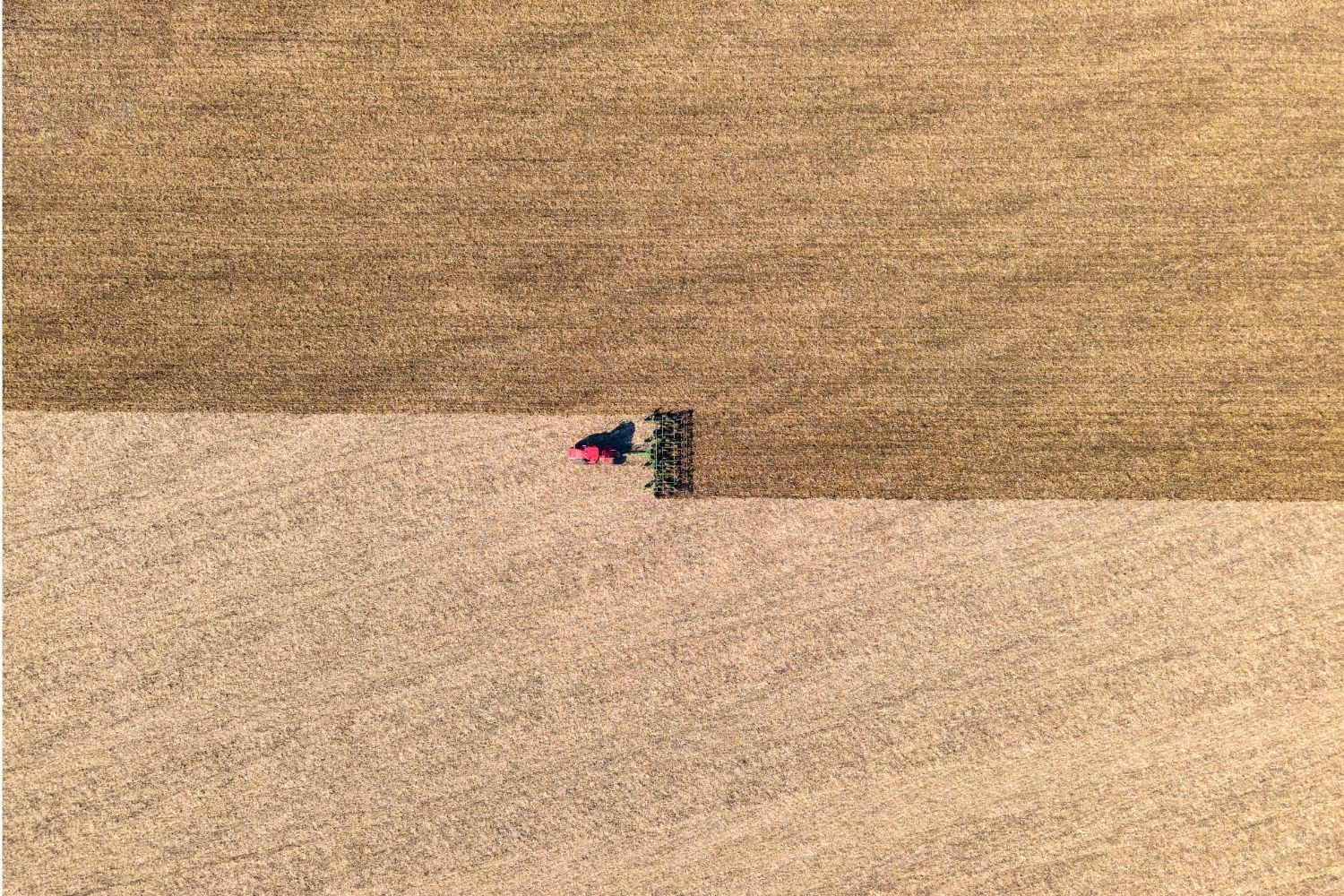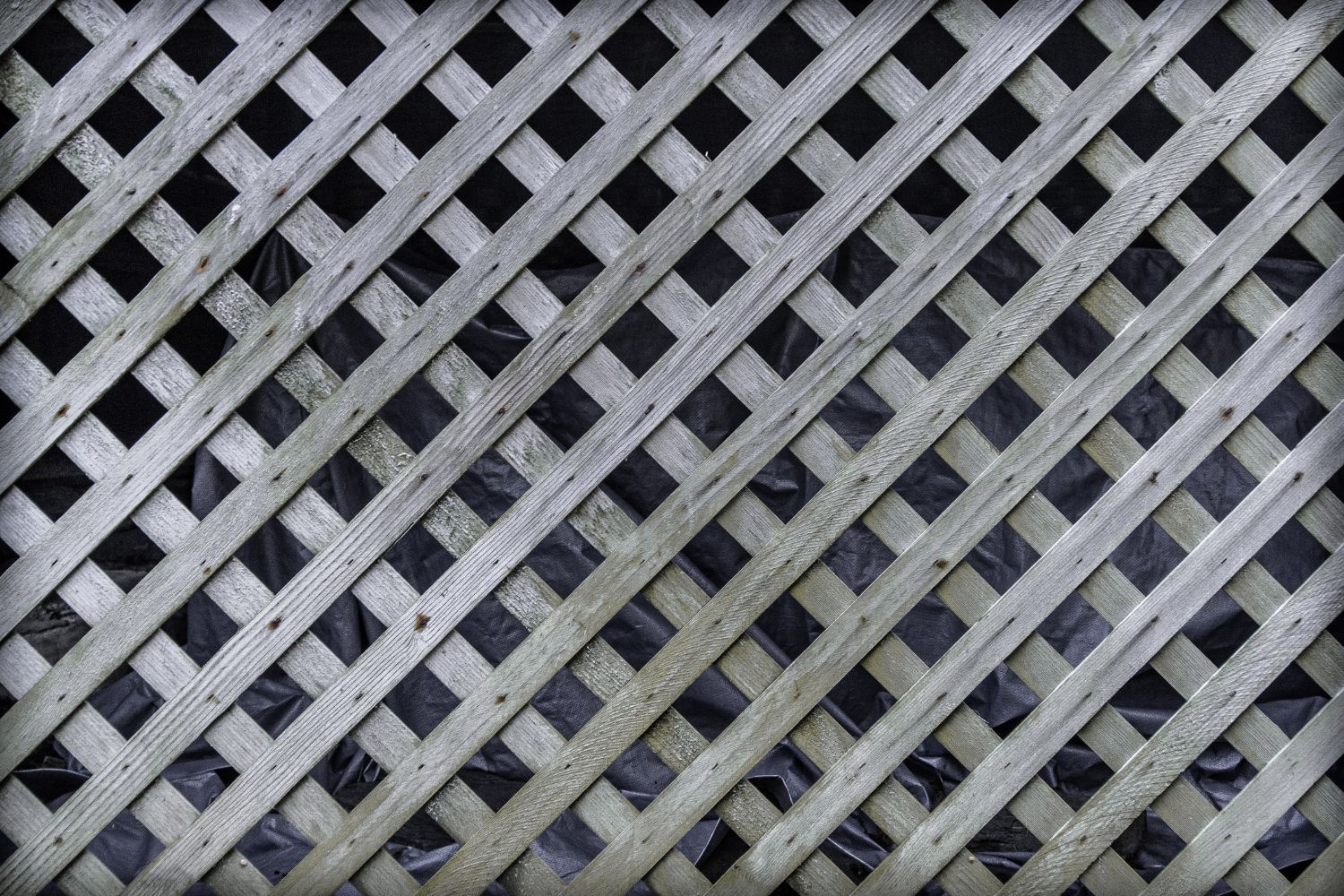Will tilling help drainage? Yes, no, maybe. The answer to this question depends on what you are trying to accomplish. Tillage may help water infiltration into the soil by breaking up plow pans (a hard layer formed at the bottom of a plowed bed) and mixing organic matter to improve soil structure. Tilling also can break up soil crusts that form on the surface after light rains or high winds. These conditions increase problems with runoff and erosion. More tilling will not benefit soils that already have a good structure. Cover crops will do little to alleviate these problems unless followed by reduced tillage practices like mulching or using a roller-crimper.
No-till farmers do not plow their soils after soybean harvest. They use a roller-crimper to kill the crop residue and incorporate any cover crops or green manures planted in the fall. The roller-crimper has large rubber wheels that compress the rubble, with smaller knifepoint discs crimping it on top of the larger wheels. A roller-crimper does not remove all plant residues like conventional tillage would but leaves enough surface residues for seed placement at planting time.
The first thing that we do in preparing for planting seeds or young plants is to plow and harvest the land and then drain it if necessary. Many kinds of seeds can not grow well unless the soil is loose and mellow, as some seeds will rot instead of sprouting if they are planted in hard soil; therefore, we must make it agreeable before we plant anything in it. Young trees should never be set out unless the ground has been worked until all sticks and stones have been removed from it, as such things kill small trees very quickly by cutting off their roots. After the land is ready for planting, you should go over it with a hoe to make it smooth, and in a rough place, make a hole about three inches deep with a spade. In this hole, you may put the vegetable from which you wish to obtain your seed, but you must remember that very few plants grow well when they are transplanted, and therefore do not take up too large a plant when you set it out.
An essential factor to keep in mind regarding tilling is that soil structure can deteriorate rapidly when tilled soils are wet during or shortly after tilling operations (see ATTRA publication Managing Cover Crops Profitably ). For instance, soils tilled when wet often become compacted during or after tilling, making them much more challenging to manage in subsequent years.
Tillage is the systematic disturbance of the soil’s physical conditions to create a desired set of requirements for crop production. Tillage methods include discing, disking, harrowing, chopping, chiseling, rolling, and aerating. Conservation tillage is also widely practiced by farmers who are increasing their use of no-till farming. The objective behind using conservation tillage instead of full-scale tilling is to place residue on top of the soil surface, which will then prevent erosion and help conserve moisture. Depending upon your objectives for your particular land resource, you may want to consider incorporating cover crops or no-till systems to help preserve your soils.
Tilling and drainage relations are the interaction of various components in crop production. The key to success in crop production is soil preparation, which includes snow cover, tillage practices, residue management, plant populations, water table depth, and nitrate-nitrogen levels.
All these factors contribute to the establishment of a healthy seedbed for crops. To achieve this, you must assess your specific needs before you can effectively implement any change or improvement. It can be done by following basic principles that need to be considered when making changes in the system:
Agronomy is one of three divisions under science that deals with soil fertility management (agroecology). Agronomy encompasses all aspects under cropping systems such as crop rotations, tillage, fertilization, and harvesting. To successfully implement change or improvement it is essential to monitor soil conditions that affect crop growth and development, such as:
To understand your specific needs, you must first identify the problem at hand. This will allow you to prioritize potential areas in which improvement can be made. A good way of doing this is by gathering historical data that relates directly to your cropping system over an extended period (at least ten years). The more information you have at hand, the greater your chance of identifying areas where changes need to be made.
An example would be cultivating a potato field in Eastern Ontario, where they usually receive about 90 cm of precipitation during the growing season. When there is not enough precipitation or harvested too soon, the soil becomes dry and compacted. This, in turn, reduces crop yields due to water stress which can affect both the outcome and quality of potatoes that are produced.















